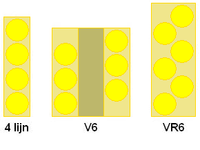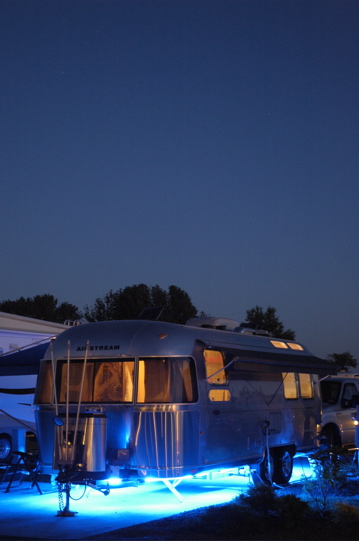Announcement
Collapse
No announcement yet.
At Last America gets it!
Collapse
X
-
Re: At Last America gets it!
As an automotive engineer, I understand those big V-8's are totally unnecessary, but I grew up driving them and love them dearly. A typical US car had a 5.7 Liter V-8 (350 cubic inches), and the big ones were over 6.5 liters (400 cubic inches). My dad was an Oldsmobile man and preferred the 455 Rocket engine, a cool 7.5 liters. My little sister still owns one for nostalgia. You should see it barreling down the road spewing hydrocarbons and throwing gravel....:p
-
Re: At Last America gets it!
You'll probably hate me for pointing this out Mike, but that 3.5 litre Rover engine was originally designed and built by the Buick Division of General Motors. It was an early attempt by GM to produce a light weight all-aluminum engine [heads and block], and although it was a fine engine, the low production volume and the special maintenance requirements caused GM to discontinue the engine and sell the tooling to Rover in the mid-60's. In the hands of you Brits the engine had a near 4 decade production run until MG went down the tubes.Originally posted by Mega View PostI bought a TR7 in the early 80's, it had a "Jimmy Carter era" 2 litre that couldn't pull the skin off a rice pudding. I place a Rover 3.5 litre V8 in place...........much better!
Mike
One of my brothers imported a 1971 Rover 3500 sedan into Canada...nice car but nobody in the colonies knew how to fix it.
[Never get a car nut going... ]
Last edited by GRG55; January 07, 2010, 11:38 PM.
]
Last edited by GRG55; January 07, 2010, 11:38 PM.
Comment
-
Re: At Last America gets it!
Originally posted by thriftyandboringinohio View PostAs an automotive engineer, I understand those big V-8's are totally unnecessary, but I grew up driving them and love them dearly. A typical US car had a 5.7 Liter V-8 (350 cubic inches), and the big ones were over 6.5 liters (400 cubic inches). My dad was an Oldsmobile man and preferred the 455 Rocket engine, a cool 7.5 liters. My little sister still owns one for nostalgia. You should see it barreling down the road spewing hydrocarbons and throwing gravel....:pThe article is actually predicting the demise of the V-6.Originally posted by Mega View Post
Certainly Hyundai's move to discontinue a V-6 option in the Sonata sedan [announced at the LA auto show last month] is going to be an interesting development to watch.
Direct injection, turbo-chargers, and other technologies result in expensive engines to produce, purchase and maintain...so we'll see if the public buy the fuel economy angle as a way to offset the lack of good ol' cubic inches...;)
One of the other reasons the V-6 engine may become more rare, and that the author doesn't mention and probably didn't even bother to research, is the space issue. The majority of light duty passenger cars today are front-wheel drive, and most of them have transverse mounted engines. Unlike an inline-4 cyl engine, the two banks of cylinders of a V-6 require more length [longitudinal space] in the engine compartment, and for a given length of vehicle that space comes out of the the passenger compartment or the luggage space, or adds more overall length, weight, cost, etc. to the car.
Quite a few years back VW solved this problem with its VR6 engine, that has only a 15 deg included angle between the cylinders, and was able to fit this engine into cars originally designed only for an inline-4 and therefore unable to accomodate a conventional 60 deg or 90 deg V-6.
Hyundai is advertising the new Sonata sedan as having the interior space of a "full size" car with exterior dimensions comparable to a Camry or Accord. I don't have any data to confirm this, but I wonder if the new Sonata doesn't have the Hyundai V-6 because it doesn't fit...
[never get a car nut going...]
btw, to get the length of the VR6 [width when mounted transversely in the car] down to match an inline 4, VW lopped off one cylinder to create the VR5.Last edited by GRG55; January 08, 2010, 12:50 AM.
Comment
-
Re: At Last America gets it!
If you want six cylinders, why not just go with a straight six?Quite a few years back VW solved this problem with its VR6 engine,
If I ever come into some decent money again, I'm going to get me another BMW straight six cylinder. Those are sweet
 ! Smooth, strong, ...
Most folks are good; a few aren't.
! Smooth, strong, ...
Most folks are good; a few aren't.
Comment
-
Re: At Last America gets it!
We're now driving a little Acura TSX, 2005, with a 4 cylinder engine so strong and fun it can almost make you forget about V6's and even small V8s.Originally posted by GRG55 View Post
Direct injection, turbo-chargers, and other technologies result in expensive engines to produce, purchase and maintain...so we'll see if the public buy the fuel economy angle as a way to offset the lack of good ol' cubic inches...;)
.
.
.
btw, to get the length of the VR6 [width when mounted transversely in the car] down to match an inline 4, VW lopped off one cylinder to create the VR5.
I seem to recall from my engine design classes that 5 cylinder engines (and 3 cyl) have some inherant vibration advantages.
And to cow's point about a straight 6, the vibration advantage of the Vee is pretty substantial -I would always choose a vee over a straight (no offense to the indestructable straight 6 engines Detroit once produced).
Comment
-
Re: At Last America gets it!
I have often wondered what would result if the old reliable '60s-'70s slant six Chrysler engine were built using today's methods and materials. It might just plain and simple never wear out. I suspect it might never pass an emissions test, eitherAnd to cow's point about a straight 6, the vibration advantage of the Vee is pretty substantial -I would always choose a vee over a straight (no offense to the indestructable straight 6 engines Detroit once produced). .
.
Comment
-
Re: At Last America gets it!
Originally posted by GRG55 View PostYou'll probably hate me for pointing this out Mike, but that 3.5 litre Rover engine was originally designed and built by the Buick Division of General Motors. It was an early attempt by GM to produce a light weight all-aluminum engine [heads and block], and although it was a fine engine, the low production volume and the special maintenance requirements caused GM to discontinue the engine and sell the tooling to Rover in the mid-60's. In the hands of you Brits the engine had a near 4 decade production run until MG went down the tubes.
One of my brothers imported a 1971 Rover 3500 sedan into Canada...nice car but nobody in the colonies knew how to fix it.
[Never get a car nut going... ]
]
No, No.....Totally aware it was a Buick V8, although a lot of extra R+D had to be done. I had Janspeed headers & Holly 6 barrel carb on mine.............It eat the local Ford 2 litre Pinto engined car everytime...........Sadly i had to sell because of running cost & Rust caught up with it............3 mnoths latter i was on the front page of the Liverpool Echo having been crash (At Warp speed) thought (I joke not) 5 gardens & took out 3 other cars!!!
Mike
Comment
-
Re: At Last America gets it!
I'm no automobile engineer, but that doesn't agree with my recollections (probably from some BMW salesman many decades agoOriginally posted by thriftyandboringinohio View PostAnd to cow's point about a straight 6, the vibration advantage of the Vee is pretty substantial -I would always choose a vee over a straight (no offense to the indestructable straight 6 engines Detroit once produced). ) or seat-of-the-pants experience for 150,000 miles of driving (wow!)
) or seat-of-the-pants experience for 150,000 miles of driving (wow!)
For example (using the far more reliable methodology of searching on Google from random blog comments ) consider these comments, from http://blog.cardomain.com/2009/08/11...ich-is-better/
) consider these comments, from http://blog.cardomain.com/2009/08/11...ich-is-better/
Or, if you prefer the Cadillac of Research, Wikipedia, consider these comments from http://en.wikipedia.org/wiki/V6_engine :An inline-6, on the other hand, would run very smooth compared to a V6 because it has only one bank of cylinders with an even number. The firing order of an inline-6 is rather easy to articulate because there is really only two ways to fire the pistons: from the piston at the front of the block towards the back of the block, and vice versa. The Toyota Supra used an inline-6 throughout its entire lifespan because it has proven to be durable, with some owners modifying theirs to have well over five-hundred horsepower with stock internals. The inline-6 isnít without its faults: Itís rather susceptible to torsional vibration, they donít fit in most modern carís engine bays, and theyíre expensive to produce. Alas, they have fallen out of disfavor over the V6, because itís seen to some as an outdated engine. BMW is one of the few car manufacturers to mass produce an inline-6 in passenger cars, while Dodge uses them as diesels in their Ram 2500 and 3500 trucks.
The V6 is one of the most compact engine configurations, shorter than the straight 4 and in many designs narrower than the V8 engine, and is well suited to the popular transverse engine front-wheel drive layout. It is becoming more common as the space allowed for engines in modern cars is reduced at the same time as power requirements increase, and has largely replaced the inline-6, which is too long to fit in many modern engine compartments. Although it is more complicated and not as smooth as the inline 6, the V6 is more compact, more rigid, and less prone to torsional vibrations in the crankshaft.Most folks are good; a few aren't.
Comment


Comment